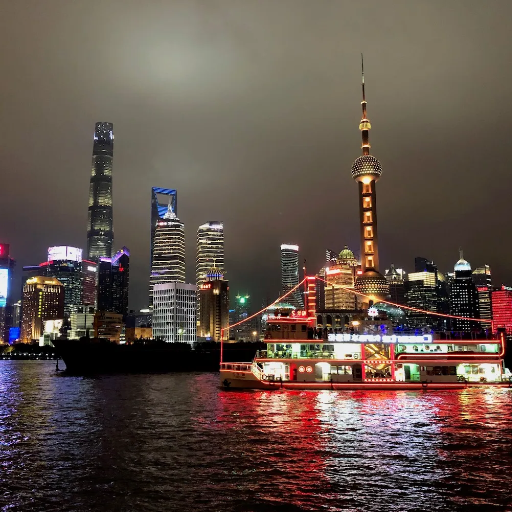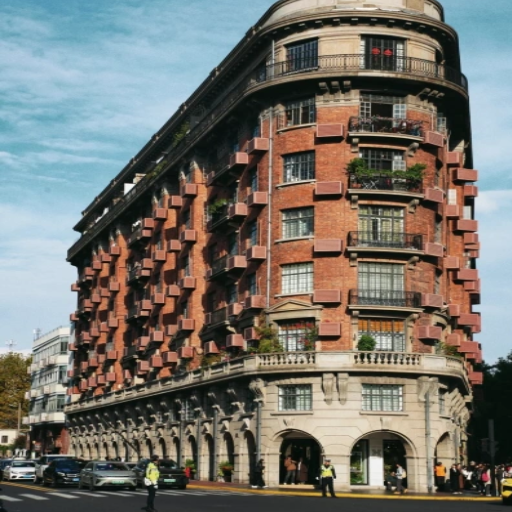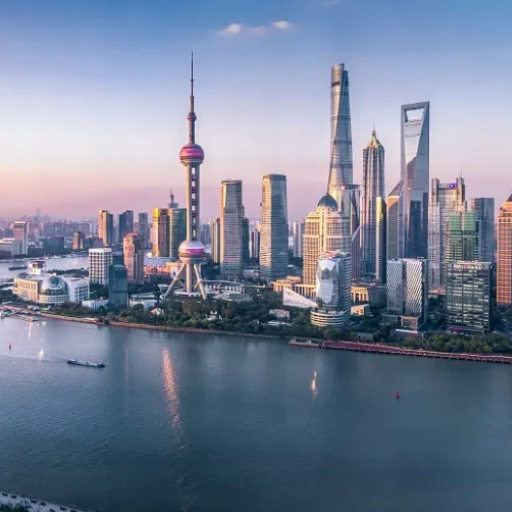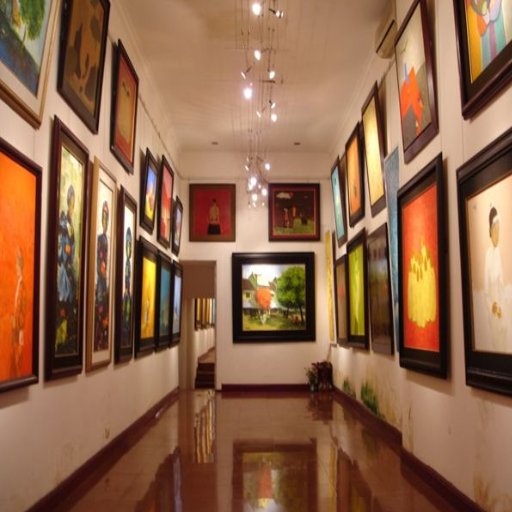As a mesmerizing blend of modernity and history, Shanghai has captured the attention of preservers. Famous for its multifaceted culture, eye-catching skyline, rich history, and as a city that never sleeps, it offers something fantastic to every tourist. Whether it’s ancient temples, famous landmarks, Shanghai shopping extravaganza, or picturesque landscapes, there is an inexhaustible supply of valued sites of great interest. The spectacular combination of landmarks, unknown treasures, and stunning adventures is unmatched, aiding towards an unforgettable experience and making it a visit worth every penny. So, get ready to explore some of Shanghai’s best value offerings and capture memories to cherish as a true essence!
What are the top must-see attractions in Shanghai for first-time visitors?

The Bund: Shanghai’s iconic waterfront with colonial architecture
Also known as “Waitan,” The Bund is located on the western bank of the Huangpu River and features some of Shanghai’s most stunning colonial-era buildings. From the waterfront promenade is a breathtaking view of Pudong’s modern skyscrapers, which beautifully contrast against the historic buildings. These buildings date back to the late 19th and early 20th centuries when they served as banks and trading firms. The Bund showcases the evolution of Shanghai and even today; it acts as the city’s core, accessible from all parts of Shanghai.
The other defining features of The Bund are world-renowned landmarks, such as the Customs House, its clock tower resembling Big Ben, and the exquisite Peace Hotel. Alongside these are 52 historical and culturally significant buildings with unique architectural designs. Strolling along the mile-long promenade gives visitors a silhouette view of the skyline, the perfect example of a city blending modernity and historical essence. Make sure to visit during the evening, as those on the promenade will be greeted with an astonishing sight where both sides of the river get illuminated with colored lights, creating a magical sense.
For tourists looking for a bit of history, The Bund offers excellent river cruise options along the Huangpu River, but that is not all. The promenade is one of the most visited places in the city because of its extensive, easy-to-navigate walkways that can accommodate huge gatherings. Also, the vast range of the structures, from modern skyscrapers in Puxi to the colonial buildings in The Bund, showcases the city’s lack of strict urban planning policies, which gives them a sense of modernity while preserving their history. Historic monument Bund is not only a destination, but it is also a symbol of Shanghai and its beautiful city, and it is unforgettable for any first-time visitor.
Shanghai Tower and Pudong’s futuristic skyline
As a hallmark of architectural and sustainable design achievement, the Shanghai Tower represents Pudong’s cutting-edge hallmark of innovation and construction. Soaring 632 meters (2,073 feet), it takes the title of the tallest structure in China and second on a global scale. Its specially crafted twisted shape reduces wind forces by 24%, which aids the structure’s efficiency in both energy use and materials. Besides hosting some of the fastest passenger elevators capable of moving at 20.5 meters per second, the building has 128 floors containing offices, one of the most luxurious hotels in the world, and observation decks.
The Pudong skyline perfectly indicates the rate at which Shanghai is modernizing. It hosts other notable buildings like the Jin Mao Tower, 421 meters tall, and the Shanghai World Financial Center, which stands at 492 meters, Showcasing the region’s intent to capture the world’s financial and business center. The towers’ differing architectural styles enhance the city’s innovative spirit and strengthen the commitment towards urban development. The area is a resort for tourists as it displays ShangHai’s zest for combining fresh technology with the old sustainable urban designs the city is known for.
Yu Garden (Yuyuan): Traditional Chinese pavilions from the Ming Dynasty
Renowned as a symbol in Shanghai, Yu Garden is a classical garden in the city. The traditional Chinese designs at the Yuan Garden are from the Ming Dynasty. Yu Garden has quite a few meticulously crafted pavilions, and it is also checkered with ponds, rockeries, roofs with curves, bridges, and woodwork, which reflects the architectural sophistication of the period. Everything in the garden is approximately five acres, and features are designed harmoniously for manmade and natural things.
Carp Ponds—This gentle, featuring network of koi fish ponds and delicately crafted pools embodies the balance between water and stone.
Ancient Walls and Dragon Decorations—Motifs of dragons surround the walls, quixotic yet bold marks representing strength and protection.
Halls and Pavilions—The artistry and elaborate carvings of the Yinghua Hall and the Dianchun Hall, combined with the Ming-style lattice windows, are a great combination.
Exquisite Rockeries – The Grand Rockery is amazing, symbolic of mountain landscapes, and offers a symbol standing tall at 12 meters constructed from hundreds of tons of Huangshi stones.
Yu Garden is charming in both architectural and cultural terms. It is a timeless landmark in China while retaining the aesthetics and virtues of the Ming period.
How can you explore the historical side of Old Shanghai?

French Concession: Tree-lined streets and shikumen architecture
The French Concession showcases Shanghai’s colonial side and its mix of Eastern and Western styles. To appreciate the historical essence of Old Shanghai, take a stroll on the quiet tree-lined streets that were meant to resemble European boulevards during the concession period. The shikumen buildings, which combine Western and Chinese architectural elements, showcase the lifestyle of the people living in Shanghai in the 20th century.
Tree-lined Streets—These streets were constructed to greatly increase the residential value, keeping the European touch while being embedded in the local context. They are perfect for a leisurely walk.
Shikumen architecture—These features served as hybrid venues between traditional Chinese courtyard houses and the Western style, marking the shift from rural to urban lifestyle during Shanghai’s development period. Look for stone-framed doors and detailed wooden carvings.
Historical landmarks – Go to The Former Residence of Sun Yat Sen to learn more about the period and its values through other means.
By experiencing these visits and places, Old Shanghai becomes visible in its rich history fused with architectural beauty.
Tianzifang: Maze of alleyways with boutiques and galleries
Tianzifang is an artistic hotspot located in the former French Concession of Shanghai. Famous for its artistic vibe and creativity flowing from the narrow alleys that it has, visitors love going to the place. Not only does it have local craft and art shops, but it also has boutiques that feature global influences. The shops also have a variety of handcrafted souvenirs and designer items that are a cultural blend of Shanghai.
One of the most captivating features around Tianzifang is the combination of contemporary architecture and preserved Shikumen style. The various lanes are also lined with numerous shops and cafes that serve delicious delicacies worldwide. With all of the historical influences in its modern design, Tianzifang is an eye-grabbing centerpiece of artistic innovation blended with authenticity for tourists worldwide.
Xintiandi: Modern shopping in traditional shikumen buildings
Xintiandi is a historic shopping and entertainment center in the heart of Shanghai, where modern city planning seamlessly integrates with traditional Shikumen structures. Boutique stores, luxury fashion labels, trendy cafes, and international dining establishments are located on the ground floor of these converted Shikumen buildings, making the area even more appealing. Locals and tourists alike are attracted to the unique blend of new and old.
Xintiandi allows for indulging in premium shopping, world-class dining, and walks through beautiful scenery. While meeting modern demands, the redevelopment guarantees the preservation of important historical structures. For all ancient architecture enthusiasts, Xintiandi is the place to visit and explore the rich history, indulge in delicious cuisine, and shop for memorable souvenirs. A delightful experience is guaranteed within this heritage-laden location.
Which temples and cultural sites should I visit in Shanghai?

Jade Buddha Temple: Home to two precious jade Buddha statues
The Jade Buddha Temple is one of Shanghai’s most well-known cultural symbols. It was established in 1882 and is famous for having two beautiful jade Buddha statues brought from Myanmar. Both statues are masterfully sculpted out of pure white jade. One shows a seated Buddha, while the other represents a reclining Buddha that signifies the Buddha’s blissful transition into nirvana. The seated Buddha stands nearly 2 meters and is decorated with jewels, making it the centerpiece of the temple.
The temple is a great example of classic Chinese Buddhist architecture. It has multiple significant halls, like the Grand Hall and the Hall of the Heavenly Kings, which have intricate wood carvings, worship objects, and colorful Buddhist paintings. The temple operates as a place of worship for monks who chant prayers to the devotees who come to offer their respects, which makes the environment very solemn and tranquil.
The Buddha Temple’s immersion into Chinese Buddhism, coupled with impressive artistry and the temple’s rich history, makes it a must-see tourist place in Shanghai. The inner silent courtyards and the rich blends of history and spiritualism all make for a calm and peaceful atmosphere. Take note: As you stroll through this magnificent site, pay close attention to the attire worn and the coveted practices of the temple.
Longhua Temple and Pagoda: Shanghai’s oldest and largest temple
As the 3rd century drew nearer, the history of Buddhism in Shanghai began to blossom through the traces left behind by the Longhua Temple and Pagoda. The majestic towering structures have served as the city’s oldest and largest temple complexes, offering deep tranquility rooted in cultural importance. Like all temples, it contains five main halls, each featuring different forms of Buddhist rituals and architecture, alongside a striking seven-story pagoda that epitomizes the Song Dynasty’s design.
Historical Origin: Built in 242 AD during the Three Kingdoms Period.
Pagoda Height: Approximately 40.4 meters, with seven levels that follow an octagonal structure.
Material and Design: Constructed with wooden structures reinforced for optimal durability and traditional carvings reflecting ancient craftsmanship.
Cultural Significance: The site hosts annual temple fairs celebrating Buddhist and cultural traditions in Shanghai.
Visitors looking to peel back the city’s historical and religious layers must visit the Longhua Temple and Pagoda. To maintain the temple’s sanctity, visitors are required to limit their movement to a minimum and wear appropriate clothing as a sign of utmost respect.
Shanghai Museum: Ancient Chinese art collections in the center of Shanghai
The Shanghai Museum, which is located in the heart of the city, has always been popular for its unparalleled collection of ancient Chinese art. The museum contains exhibitions of bronze artifacts, ceramics, jade, calligraphy, and paintings, making it possible for people to understand China’s culture better and in detail.
Bronze Collection: China’s ancient metalwork is well presented, with over 400 exquisite pieces.
Ceramics Exhibition: Thousands of years are covered, including, but not limited to, the Neolithic Age and Qing Dynasty.
Jade Artifacts: Various carvings representing the skill of ancient craftsmen at the skilled hands showcases of the museum.
Calligraphy and Paintings: Masters of History expresses China as the hub of literature and arts with traditional calligraphy and Chinese classical paintings.
The museum’s exhibits mix modern and old art. Everything, including the external and internal design, symbolizes a traditional Chinese ‘DIng’ vessel, which stands for power and stability. The museum also serves an educational purpose, as all exhibits are thoroughly described and justified with historical importance.
What are the best modern attractions in Pudong?

Oriental Pearl Tower: Iconic landmark of Shanghai’s skyline
Located in Lujiazui of Pudong, the Oriental Pearl Tower is perhaps the most illustrative building in Shanghai. It is 468 meters (1,535 feet) tall and was built in 1994, making it one of the tallest towers in the city even today. The tower has 11 spheres of different sizes, and the main one, located 90 meters from the ground, has an observation deck stationed within it. At 259 meters, the upper sphere has another level that provides breathtaking 360-degree views of the city.
The tower is also home to a glass-bottomed skywalk for daring visitors, Shanghai’s history museum showcasing the city’s transformation, and a restaurant around the tower’s axis. Its design looks like “large and small pearls falling on a jade plate,” which means harmony and prosperity in Chinese culture. The technical parameters are about its three main pillars, each with 9 meters of diameter alongside the stable base, guaranteeing lasting earthquake resistance.
Shanghai World Financial Center and Lujiazui skyscrapers
The Shanghai World Financial Center and the Lujiazui skyscrapers showcase the latest engineering and building construction technology. Standing 492 meters tall, the trapezoidal opening at the top of the World Financial Center attracts rather than repels wind, increasing the building’s stability. In addition, the steel frame, advanced damping systems, and wind-sustaining shape help the building resist strong earthquakes and remain intact for long periods.
Another engineering wonder in the Lujiazui area is the Shanghai Tower. At 632 meters, it claims the title of China’s tallest building. The tower’s energy-saving double-skin facade and spiral-shaped window arrangement, which cuts down on strong wind, along with the World Financial Center, are outstanding examples of the perfect balance between advanced technology, eco-friendly attitudes, and fine architectural design that signify the fast-growing city of Shanghai.
Shanghai Natural History Museum and Technology Museum
A good example of augmenting natural wonders through innovative displays and interactive exhibits is one of the Shanghai Natural History Museum and its strategically advanced design, such as the structural green roof. The nautilus shell also serves as a design that improves the aesthetics. The learning experience provided to the users is engaging as the building provides natural illumination for the sustainability methods employed in the construction. The building also utilizes sustainable methods, which helps to minimize the environmental impact.
The same applies to the Shanghai Science and Technology Museum, whose achievements in technology and knowledge also incorporate distinct architectural designs in glass dome spheres. The denoted theme is integrative of man, nature, and technology, which is showcased through the interactive exhibits. It boldly claimed state-of-the-art spirit to promote scientific education and an energy-efficient system to sustain comfort and optimize heating and cooling.
Both facilities possess stunning architectural brilliance, sustainable designs, and efficiency, representing Shanghai’s modernized advancement in the education sector.
Where can you find art and culture in Shanghai?

M50 Creative Park: Contemporary art galleries in a former industrial zone
M50 Creative Park contains vibrant artistic studios centered around an old industrial area, showcasing the blend of heritage and contemporary culture that the city contains. The eclectic mix of galleries, studios, and design shops reveals the history of modern art in China, where each space tells a unique story filled with imaginative and unconventional art pieces. M50 is a testament to the city’s capability to integrate its industrial history with the present-day modernistic culture.
The appeal of M50 Creative Park as a contemporary cultural space is due to its technological features, which are constantly being upgraded. The adaptive reuse of industrial buildings is an example of sustainable urbanism, as it minimizes the required new development and uses the existing structure’s architectural form. Like other transformed factories, the building is surrounded by high walls, large open spaces, and oversized windows, providing a well-lit and airy space to showcase the artwork without requiring too much artificial lighting. The energy systems designed for efficiency in the renovated buildings also help conserve the environment in the park, in addition to serving the tenants. The merger of bold, functional, “raw” construction and modernist features reveals an aesthetic of utility and sculptural form.
To me, M50 Creative Park is not just a cultural place but a point of fusion of technology with eco-friendliness. It is a place where the past meets the present, and they collaborate, providing great inspiration for contemporary artists, residents, and tourists. The careful transformation of the industrial area is part of the global strategy of the city of Shanghai’s modern green urban redevelopment. It shows that even when using remains of the past, they can be integrated with sustainable design, which cities across the globe should adopt.
Jing’an Temple: Buddhist temple surrounded by modern skyscrapers
At the heart of Shanghai lies Jing An Temple, a stunning example of a modern structure built on a treasure of tradition. From my point of view, this temple epitomizes the paradox of being an exquisite oasis within a modern city filled with skyscrapers. It also demonstrates the culture and heritage alongside the rapid urban development of the town.
If we analyze the technical aspects in terms of the holistic design and the location of the temple, the following are the most pertinent:
Cultural Impact Influence: The temple has kept its traditional Buddhist style, which poses a significant contrast to the modern sleek architecture. This makes the temple highly historically relevant and a natural landmark within the skyscrapers.
Temple Design Urbanism: This temple’s location within the busy district of Jing An in Shanghai is well thought out. The temple is a cultural and visual centerpiece in the area dominated by glass and steel skyscrapers.
Sustainability: There is no direct impact on sustainability aspects, but the presence of the temple in the developing part of town is instead a sign of sustainable cultural preservation in a city environment.
Jing An Temple represents Shanghai’s capability to integrate history and modernism in one piece of architecture, an example that can be set for the rest of the world.
Strolling through Shanghai’s parks and gardens
During my walks in the parks and gardens of Shanghai, I get lost in their soothing atmosphere and calm design. Fuxing Park and Century Park, along with the other green spaces in the city, act as a breathing space amidst the bustling metropolis. These parks become part of the city and demonstrate how massive urban centers can promote the existence of natural beauty. Their existence beautifies the town while acting as a breath of fresh air from all the dense architecture surrounding them.
While this may seem like a softer boost, it has a more tangible impact on air quality and the sustainable building of the climate. Greenery is a central component of the reduced urban heat island effect. Plants and trees help cool down the city during the sweltering summer months in Shanghai. Not to forget that these trees and plants also filter the smoke, helping improve the air quality for the residents. The city’s construction of these green areas displays the eco-friendly focus in city planning, which is often neglected.
My research shows these green spaces contribute significantly to social and mental health. For example, they provide sites that foster relaxation, physical activity, and social interactions, which enable community cohesion and healthier living. Studies proved that having parks and gardens lowers stress and improves residents’ mental health by providing them a refuge amid the bustling pace of metropolitan areas. With these thoughts, it is likely to understand how the parks and gardens in Shanghai integrate beauty, ecological health, and social well-being to improve the quality of life in the city.
Frequently Asked Questions (FAQs)
Q: What attractions do you recommend to first-time travelers to Shanghai?
A: First timers in Shanghai should get a feel for the city by visiting The Bund for its spectacular views of the skyline and The Huangpu River, Yu Garden for its traditional Chinese architectural beauty, Shanghai Tower (the tallest building in China and second tallest in the world), Disneyland Shanghai for some family fun, Tianzifang for its artistic alleyways, and of course the People’s Square, the center of the city. The tourist attractions Shanghai has are a great merging of the traditional and modern, depicting the country’s unique culture.
Q: Can I shop and entertain myself at Nanjing Road?
A: Certainly! Nanjing Road is amongst the busiest streets around the globe and a must for many first-timers. The pedestrian section is about 1.2km long and filled with hundreds of retail stores ranging from luxury labels to local boutiques. In addition to shopping, there are great restaurants, street entertainers, and mesmerizing neon lights at night. It is also positioned close to The Bund, so it can easily be reached by metro lines 1 or 2, offering a fascinating view of Shanghai’s commercial life.
Q: What is the best park in Shanghai to soak in the local culture?
A: Peoples Park, located in central Shanghai, provides the best insight into local culture. The park, which used to be a racetrack, has many features, including the renowned “Marriage Market,” where parents come with their children’s marksheets to find prospective suitors. The park also has the Shanghai Museum, the Shanghai Urban Planning Exhibition Center, and stunning gardens where tai chi and traditional instruments are performed. Another great option is Fuxing Park, located in the French concession area of Shanghai, where you can see mahjong games, ballroom dancing, and other genuine local activities.
Q: Does Zhujiajiao Ancient Town meet the criteria for a half-day visit?
A: Zhujiajiao ancient town can be seen in a half day; however, a full day is suggested to appreciate the water town. Major attractions are riding on a gondola through the canals, visiting Kezhi Garden, the Qing dynasty post office, crossing the Fangsheng Bridge, and walking the narrow streets filled with souvenir shops and food stalls. The central canal area, Fangsheng, and other major bridges will suffice for those who are short on time. The town gets busy during weekends, so weekdays are preferable to enjoy this historic town.
Q: What is the best way of seeing Huangpu River while on a trip to Shanghai?
A: A fantastic approach to experiencing Huangpu River is through a cruise dinner where one can enjoy the skyline of both Pudong and The Bund. The cruises are 30-60 minutes long and provide some of the best photo opportunities. You can also stroll along the Bund promenade to enjoy the atmosphere for free or use the eccentric Bund sightseeing Tunnel that goes under the river. To step things up, visit one of the rooftop bars on either side of the river, like Bar Rouge, or the observation decks of Shanghai Tower, which boast breathtaking views of the “mountains and forest within” the city.
Q: As a first-time traveler to Shanghai, is it worthwhile visiting Shanghai Disneyland?
A: For fans of Disney or families with children, Shanghai Disneyland is worth the visit as the park features exclusive rides like the TRON Lightcycle Power Run and the Pirates of the Caribbean: Battle for the Sunken Treasure. The park also has a magical mix of Disney and Chinese culture. If you have time constraints and are more culturally inclined, other attractions such as The Bund, Yu Garden, or a day trip to Zhujiajiao might take precedence over Disneyland Park. Remember that the park, which is located approximately 1 hour from downtown via metro line 11, requires one full day to be enjoyed thoroughly.
Q: What are the recommended modes of transport for first-timers in Shanghai?
A: Tourists will have little difficulty getting around Shanghai due to the extensive metro infrastructure, where English is used for signs and announcements. Additionally, riders can board the Shanghai Maglev train at Pudong Airport and disembark at Longyang Road Station. Besides being a unique experience, the train reaches 430 kilometers per hour (267 mph). Taxis are relatively cheap, but ensure the address is written down in Chinese. A ferry also operates across the Huangpu River to ferry passengers to either side of the bank. Other parts of the city, such as The Bund and Nanjing Road, also have areas where walking is encouraged. Baidu maps are available for people unfamiliar with the city, while DiDi is the local Uber.